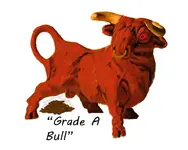O.K. so I'll entertain the grass clippings and decomposition theory but I have a few problems with that. Most grass areas we search have had the clippings removed by the lawnmower or raked up.
Now explain to me why I've found thousands of older artifacts fairly shallow in the bush? Sorry, Americans prefer woods. Forest, whatever.
In fact, I've searched oak forests and couldn't find anything beyond 4 inches deep maximum! No, I use a deep seeking machine, there just wasn't anything beyond that depth. I've found 200+ year old metal artifacts right near the surface in the woods many times.
I think a bush will trump your grass clippings any day with all the leaf mold, rotting logs, and grass/weeds. Sure tree roots account for some cases but that should work in the opposite direction as well by pushing objects down. I rarely find anything deep in the woods unless it's the treeline along a plowed field, where topsoil has blown in and deposited over the years.
I know oak trees will only grow on higher ground and out here in flood country, that makes a difference but I just can't buy your grass clipping theory as forests create MORE organic debris and on average items are much shallower.
Now, searching a flood plain is a whole different ball game! Yes, silt has deposited over the years burying items deep. There were stories during the Great Depression where the drought made fields so dry and big winds would come in and lift all the topsoil off and it would travel for sometimes miles elsewhere. Many variables I'm sure.
Heavy gold will be deeper at beaches, lakes, surf, etc. It sinks faster with wave action.
Of course here in winterland the ground shifts all the time.
In plowed fields things will be on the surface but they also will sink below the plow zone. Some parks may have been cultivated years before they were parks.
Hmmn, now that I think about it, I don't recall seeing many earthworms in the bush but a ton of them in grassy park areas.

Do they sink or not........ that is the question.
Cheers,
Dave.








